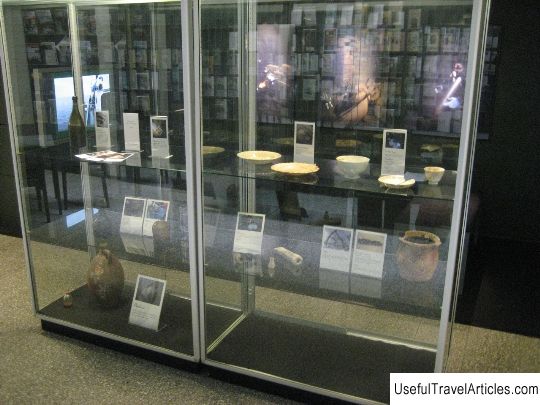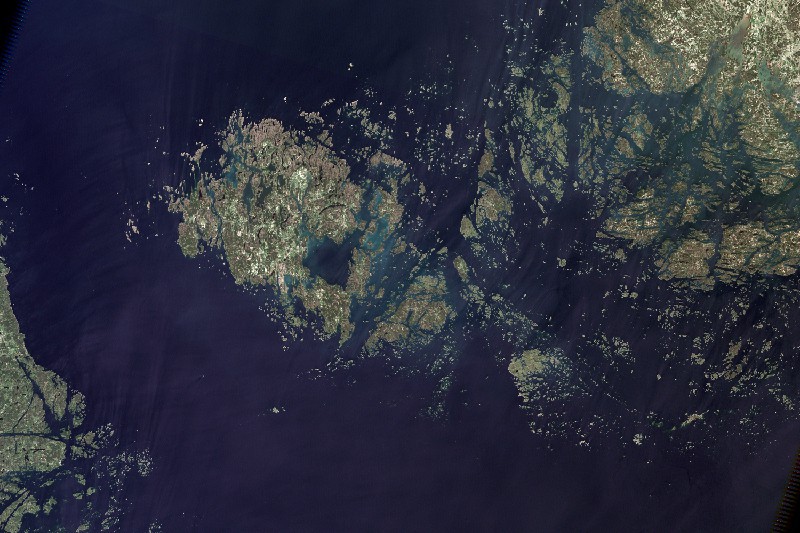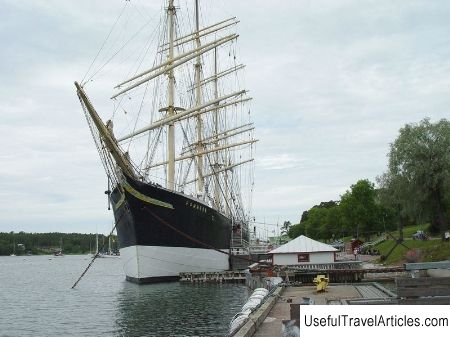Alands Museum description and photos - Finland: Mariehamn
Rating: 8,3/10 (869 votes) 
Alands Museum description and photos - Finland: Mariehamn. Detailed information about the attraction. Description, photographs and a map showing the nearest significant objects. The title in English is Alands Museum. Photo and descriptionThe Aland Museum in Marienhamn allows its visitors to experience the history and ethnography of the islands. The permanent exhibition is divided into 8 thematic sections: hunting and fishing, agriculture, society, people, sea, city, war, autonomy. The "Hunting and Fishing" hall will take you to the Stone and Bronze Ages, when the first people arrived from the east of the Swedish coast in Aland, about 6000 years ago. And after 1500 years, the second wave of immigrants brought here culture from the west of Norway. The Aland Museum in Marienhamn allows its visitors to experience the history and ethnography of the islands. The permanent exhibition is divided into 8 thematic sections: hunting and fishing, agriculture, society, people, sea, city, war, autonomy. "Hunting and Fishing" Hall takes you back to the Stone and Bronze Ages when the first people arrived from the east of the Swedish coast about 6,000 years ago. And 1500 years later, the second wave of immigrants brought here culture from the west of Norway. Traces of agriculture on the archipelago have been found since the end of the Stone Age. More than 380 burials have survived from the Viking era. Farms were, as a rule, scattered throughout the islands, and not collected in the villages. The coastal climate of Aland is characterized by mild winters, early springs, warm summers and autumn. Calcareous soils and fertile clay contributed to the development of agriculture. The Society exposition tells the story of how the old Scandinavian paganism was replaced by Christianity. Wooden churches were replaced by stone structures. Small chapels were erected for sailors along the ancient trade routes. Over the centuries, the institution of the church has changed, and the great respect for the clergy and strict discipline have remained unchanged. In the Middle Ages, Aland was a self-governing province, the supreme authority of which was the County Council in Saltvik. Ballads, ditties, dances, lullabies were an integral part of the life of the population of the Aland Islands, were performed in every house without exception and passed from generation to generation. generation. Also, large weddings were common, which were celebrated for 3-4 days. The main musical instrument of the local population was the violin. Accordional became popular only after World War I. The sea has always played an important role in the life of the Alland Islands. Fishing and shipping are still the main industries for the majority of Aland people. Tourism in the archipelago began to develop only at the end of the 19th century, when the first spa sanatorium was opened. However, due to the outbreak of World War I, this type of tourism was irrevocably lost here. The 1st World War marked the beginning of autonomy on the Aland Islands. Local activists advocated the annexation of the archipelago to Sweden, however, in 1921. The League of Nations decided that the islands belong to Finland, but granted the islands the right to wide autonomy, protection of the Swedish language and demilitarization. The museum is free to enter from October to April, as well as on International Museum Day, May 18, and on Autonomy Day on June 9. However, due to the outbreak of World War I, this type of tourism was irrevocably lost here. The 1st World War marked the beginning of autonomy in the Aland Islands. Local activists advocated the annexation of the archipelago to Sweden, however, in 1921. The League of Nations decided that the islands belong to Finland, but granted the islands the right to wide autonomy, protection of the Swedish language and demilitarization. The museum is free to enter from October to April, as well as on International Museum Day, May 18, and on Autonomy Day on June 9. However, due to the outbreak of World War I, this type of tourism was irrevocably lost here. The 1st World War marked the beginning of autonomy in the Aland Islands. Local activists advocated the annexation of the archipelago to Sweden, however, in 1921. The League of Nations decided that the islands belong to Finland, but granted the islands the right to wide autonomy, protection of the Swedish language and demilitarization. The museum is free to enter from October to April, as well as on International Museum Day, May 18, and on Autonomy Day, June 9.     We also recommend reading Transfiguration Cathedral description and photos - Russia - Siberia: Abakan Topic: Alands Museum description and photos - Finland: Mariehamn. |




